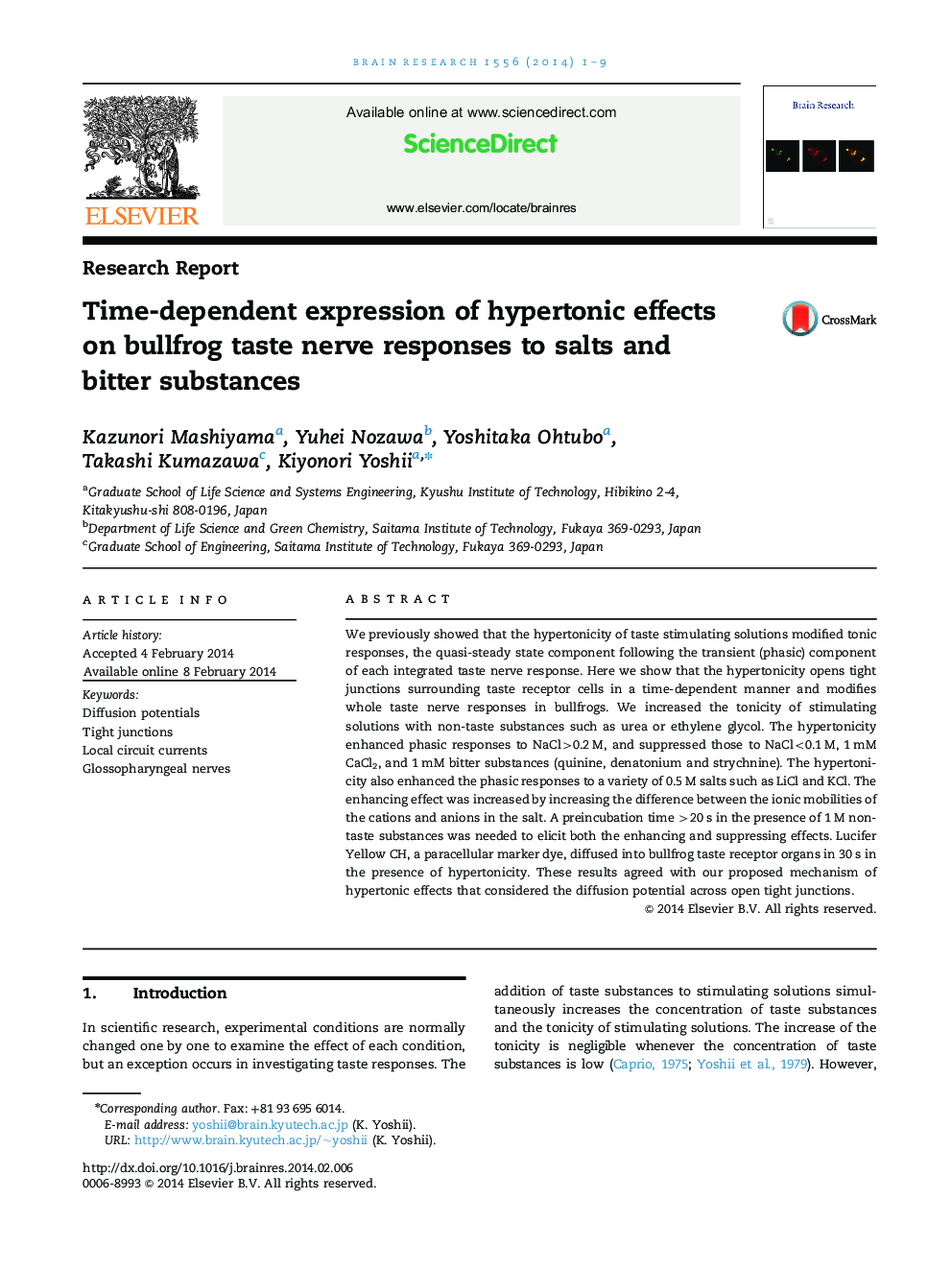| Article ID | Journal | Published Year | Pages | File Type |
|---|---|---|---|---|
| 4324346 | Brain Research | 2014 | 9 Pages |
•Hypertonicity modulated taste nerve responses to a variety of taste substances.•Hypertonicity opened tight junctions surrounding taste receptor cells.•Both the modulation and opening occur in a time-dependent manner.•The diffusion potential across the open tight junctions caused the modulation.
We previously showed that the hypertonicity of taste stimulating solutions modified tonic responses, the quasi-steady state component following the transient (phasic) component of each integrated taste nerve response. Here we show that the hypertonicity opens tight junctions surrounding taste receptor cells in a time-dependent manner and modifies whole taste nerve responses in bullfrogs. We increased the tonicity of stimulating solutions with non-taste substances such as urea or ethylene glycol. The hypertonicity enhanced phasic responses to NaCl>0.2 M, and suppressed those to NaCl<0.1 M, 1 mM CaCl2, and 1 mM bitter substances (quinine, denatonium and strychnine). The hypertonicity also enhanced the phasic responses to a variety of 0.5 M salts such as LiCl and KCl. The enhancing effect was increased by increasing the difference between the ionic mobilities of the cations and anions in the salt. A preincubation time >20 s in the presence of 1 M non-taste substances was needed to elicit both the enhancing and suppressing effects. Lucifer Yellow CH, a paracellular marker dye, diffused into bullfrog taste receptor organs in 30 s in the presence of hypertonicity. These results agreed with our proposed mechanism of hypertonic effects that considered the diffusion potential across open tight junctions.
